Towards a New Architecture by Le Corbusier Review and Booknotes
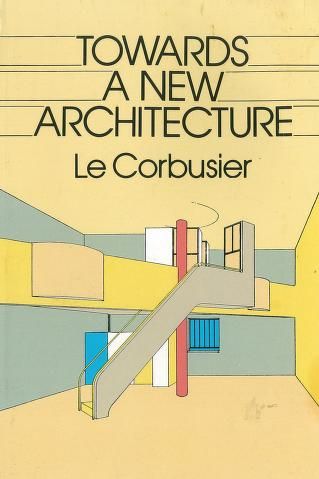
Towards A New Architecture Buy on Amazon.
One of Architectures most famous books which heralded the start of modernism and modern architecture as we know it today. A foundational text which followers and detractors must both read as the territory that Architecture is fought over is shaped partially by this book.
The Post is broken up into two. A short review and a set of notes from the book.
Review
The Book Towards an Architecture was published in 1923, written by the Swiss Architect Charles-Édouard Jeanneret who had christened himself Le Corbusier.
It’s translated title ‘Towards a New Architecture’ went on to become one of the most influential Architectural written works since then.
A rhetorical cornerstone of the modernist movement it’s used both to support or attack modernism depending on which side of the style wars people sit. It’s a tour de force in rhetoric, theory and furturism.
Introduction
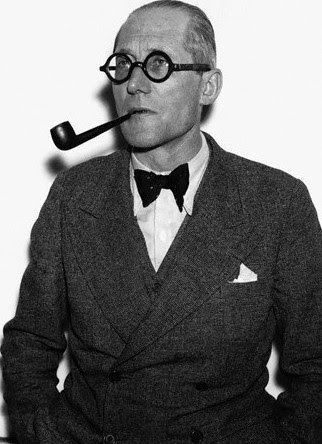
Le Corbusier
Charles-Édouard Jeanneret moved to Paris in 1917 and with the painter Amédée Ozenfant and poet Paul Dermée in 1918 he founded L’Esprit Nouveau a magazine that ran until 1922 they both decided to use nom de plume’s and Jeanneret renamed himself Le Corbusier. Some of the articles in the magazine were then brought together into the book Towards an Architecture. He founded his Architectural practice with his cousin Pierre Jeanneret in 1922 and the book published with articles culled from the magazine.
Le Corbusier
So the book signals the start of the Architect Le Corbusier and brings together his thoughts and analysis he had made over the years before and acted as a kind of launch for his version of modernism. Throughout the twenties and thirties much of his Architecture will look like something straight from this book, after WWII not so much.
Key Thoughts
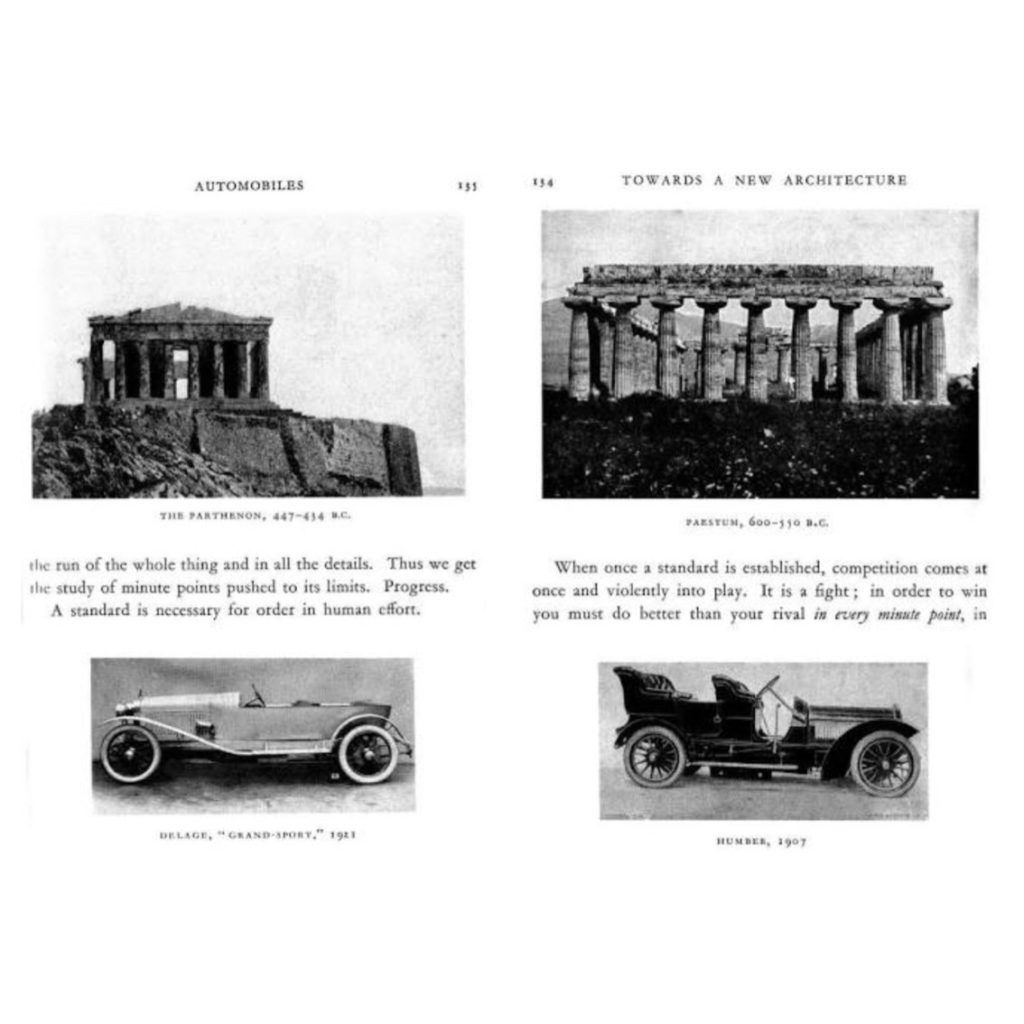
Car and Parthenon together possibly the most famous page in any Architecture Book.
Towards an Architecture is a manifesto and a highly polemical book for his Architectural program. Here are some of it’s key thoughts.
- The book is an exceptional object in itself. Using images to shock and persuade as much as words. A polemical manifesto and a great sales pitch.
- Although represented as a break from past styles. It analyses Greek architecture in paticular and clearly Le Corbusier wants to make a clear link with early simpler forms of classisism linking to it’s use of primary forms.
- The page with the parthenon and the motorcar - is it the most famous page in any architecture book anywhere? A hundred years later it’s power to shock is all used up it’s been so throughily absorbed into the mainstream.
- He clearly recognises that engineers have so far made the running in building the new world. The Eiffel Tower the worlds tallest structure still at the time of writing was designed and built by an Engineer.
- LeCorb demonstrates his capability to make rhetorical iconography ((The phrase comes from the podcast About Buildings and Cities which did a nine part podast on Le Corb. I think they said this during the episode where they discussed Towards an Architecture but am happy to be corrected. Listen here)) out of the modern. To see where the world is heading and to shape how it will look.
- Le Corb of the twenties following this book will design a set of stunning modernist houses which are all technological failures (they all leak are cold and get mould) but which help to write the modernist cannon.
Why the Book Title is Important
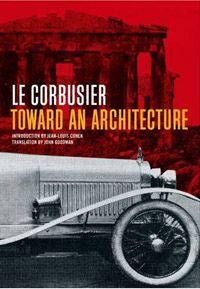
A New Translation with updated Title
So the Title of the book in the English language was always Towards a New Architecture as originally translated in the first english version in 1927. It has been a controversial translation as it changed the title and substituted volume and mass from the original to name. This changed in 2007 with a new translation by John Goodman which was a more accurate and faithful translation of the original and restored the original title. See Kenneth Framptons reviewof the updated translation.
The new is important in the title as it over emphasises the new in what Corbusier was proposing. He wanted a new set of technologies, and a new set of aesthetics derived from bridges, boats, cars yes but also he maintaned these were universal and fundamental design ideas that he identified went back to classical antiquity. Simple and clear geometries employed to make certain planning and visual moves.
The book is really as much about reconsiling all this new design with Architectural design with which the mainstream was not concernerd at all. If Beux arts architects were still fiddling with the orders, deciding between neo-gothic and classical baroque on the facade of an car company how was that anything other than anachronistic. This is why the new is an important and misleading adddition to the title.
Conclusion
This is a moment in time where modernism is being tried out across all political persausions. Both in communist and capitalist regimes alike its being tried on for size. Here Le Corb a serial failed entrereneur makes the case for Capitalism, Architetcure or Revolution, one or the other. Le Corb thinks his modernism can cure revolution.
Technological innovation took a giant leap forward during WWI and Architects in the twenties start to try to incorporate this into their Architectural programs.
Towards a New Architecture sets out LeCorbusiers vision for the future of the world and for Architects. It seeks to centre the Architect back in the key role as creative force in the building of this new world.
Perhaps due to it’s fame it belies it’s reputation in breaking from the past. Le Corb wants to break with pattern book classisism and applied style. He wants to break from the immediate past. He is though, extremely careful to try to locate the origins or his modernism directly back to Classical Architecture. His long and careful analysis of the Parthenon and of Greece and Rome bears witness to that.
He is perhaps even advocating for something more than a new style, he hopes to establish a new order of Architecture. The images in the book are perhaps even more strong than the text. Corbusier is talented editor and book designer, trying to lead his argument with both.
The book repeats itself, its structure is oblique, for me over structured and yet unclear. This may come from the fact it’s culled from many seperate magazine articles. Yet this unusual structure in some way emphasises the key rhetical points Corbusier uses. Along with the images it drives its point home effectively.
Corbusier’s designs show real feel and touch for spaces and for a living environment that elevates it’s clients. This is in real contrast to his personal politics or some of his grandiose urban planning visions. His designs here show off his design ability I think really well.
This is a recommended book and if read carefully should begin to show a picture of Corbusiers Architecture that escapes most easy critiques of modernism.
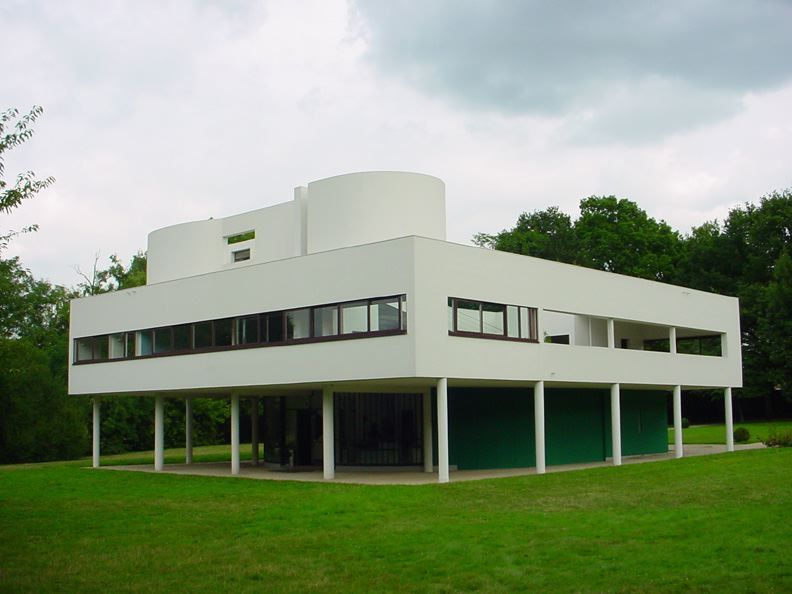
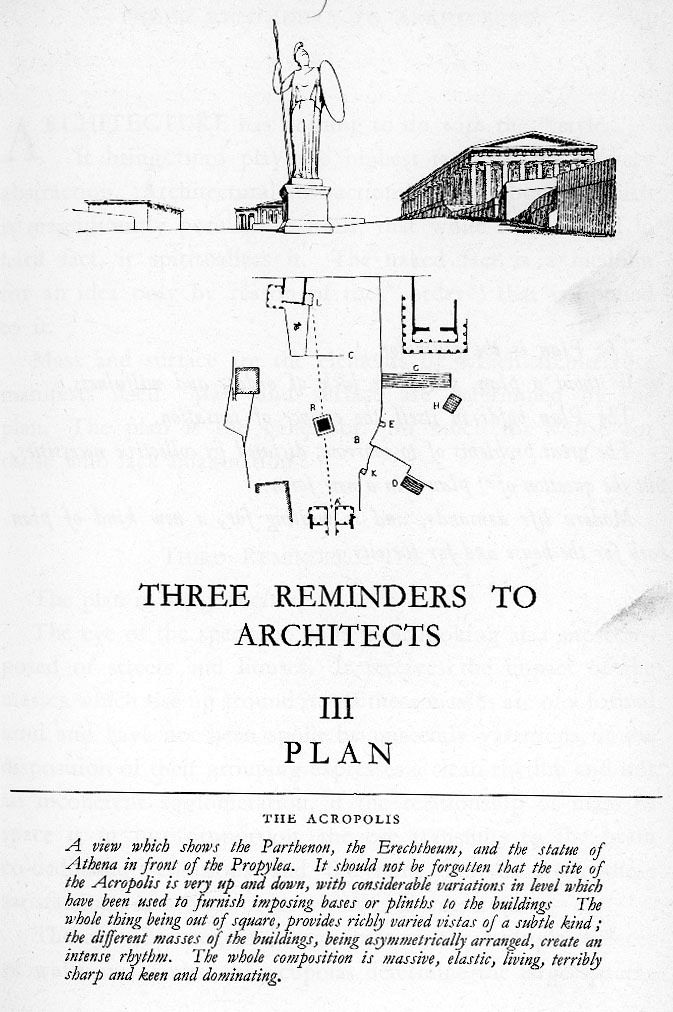

Booknotes
I have added my rough notes on the book taken as I was reading as a help to understanding the book.
This edition is the version by John Rodker in London in 1931
Translated from the thirteenth french edition with an Introduction by Frederick Etchells its not the John Goodman translation made later and probably more accurate. For example the Title itself, but also within the book the Heading Mass is actually volume (le volume) in the original.
Introduction
- The first reaction to the new is distrust or hate, but we soon adjust and learn to use new things.
- First picture is of a lock on a river in Liverpool.
- the new syle of the age is slowly taking shape.
Argument
A super condensed overview of the book.
The Engineer’s aesthetic, and Architecture, are two things that march together and follow one from the other: the one being now at its full height, the other in an unhappy state of retrogression.
Primary forms are beautiful forms because they can be clearly appreciated. Architects today no longer achieve simple forms.
Three key things for Architects to remember
- Mass (simple or primary forms best)
- Surface (by which the mass is understood and expressed)
- Plan (the generator)
The Engineer’s Aesthetic and Architecture
Le Corb argues that this is the time in which engineering is ascendant over architecture and this should not be so.
The Engineer inspired by the Laws of Economy and maths
The Architect the arranger of forms and creator of order
- Architecture is a key element of man’s production, the house is the first tool he forged for himself. (pg.13)
- Modern houses rise us out of our wreched state.
- Schools of Architecture confound modern architecture.
- Architecture is still something beyond an engineering problem.
- Photo of Pisa and a grain elevator at the end of this chapter and beginning of next.
Three Reminders To Architects:
I.Mass
Our eyes are constructed to enable us to see forms in light. Primary forms are beautiful forms because they can be clearly appreciated. Architects to-day no longer achieve these simple forms. Working by calculation, engineers emply geometrical forms, satisfying our eyes by their geometry and our understanding by their mathematics; their work is on the direct line of good art.
- Architecture is not about styles. Architecture is capable of the sublime, objectivity, heights of abstraction. Mass and surface are key elements.
Architetcure is the masterly, correct and magnificent play of masses brought together in light.
- Egyptian, Greek and Roman architecture is good (simple forms)
- gothic architecture is bad - not based on simple forms
- Cathedrals are sentimental.
- Grain elevators are the first fruits of the new age.
- Again at the end of the chapter a classical example - Courtyard: Bramante and Raphael
II. Surface
- the envelope of a mass is its surface
- revisit of “styles” quote.
- A beautiful simple stucture Greek temple and square.
- End/beginning of chapter shows a classical monument.
III. Plan
The Plan is the Generator.
Without a plan, you have lack of order, and wilfulness.
The plan holds itself the essence of sesation.
The great problems of to-morrow, dictated by collective necessities, put the question of ‘plan’ in a new form.
Modern life demands, and is waiting for, a new kind of plan both for the house and for the city.
- repeated again ‘Architecture has nothing to do with styles’
- towns built on piles- servant spaces below.
- first 6 stories are servant spaces - don’t have to dig up the old stuff just build ontop.
- Streets with setback and not courtyards.
Regulating Lines
An inevitable element of Architecture.
The necessity for order. The regulating line is a guarantee against wilfulness. It brings satisfaction to the understanding.
The regulating line is a means to an end; it is not a recipe. Its choice and the modalities of expression given to it are an integral part of architectural creation.There is no such thing as primative man; there are primative resources. The idea is constant, in full sway from the beginning.
- This is a key idea. The best architectural principles are infact unchanged from the beginning. Great Architecture is timeless.
- Basic measures LeCorb tries to start from first principles.
- shows regulating lines on Notre Dame
Eyes Which Do Not See
Now talking to developers, entrepreneurs etc
I.Liners
A great epoch has begun.
There exists a new spirit.
There exists a mass of work concieved in the new spirit; it is to be met with particularly in industrial production.
Architecture is stifled by custom.
The ‘styles’ are a lie.
Style is a unity of principle animating all the work of an epoch, the result of a state of mind which has it’s own special character.
Our own epoch is determinin, day by day, its own style.
Our eyes, unhappily, are unable yet to discern it.
- Machinery is a new factor in human affairs.
- writes against decoration.
- Ocean liner compared against a collection of great buildings. Again a fanastic use of juxtaposition in imagery. With Le Corb an image is worth 1000 words.
- Architecture is stifled by custom - repeated again so I see.
A House is a machine for living in. Baths, sun, hot-water, cold-water, warmth at will, conservation of food, hygiene, beauty in the sense of good proportion. An armchair is a machine for sitting and so on.
- Is the above quote a practical observation rather than a basic principle it seems to have become later.
- The future is here alredy we just don’t see it yet.
- LeCorb really likes ocean liners.
Machines will lead to a new order both of work and of leisure. Entire cities have to be constructed, or reconstructed, in order to provide a minimum of comfort, for if this is delayed too long, there may be a disturbance of the balance of society. pg 101
So Le Corbusier is no revolutionary politically. This is a warning & promise to the establishment.
The Time is ripe for construction, not for foolery.
Art is not an essential pablum except for the chosen few who have need of meditation in order that they may lead. Art is in its essence arrogant.
The Steamship is the first stage in the realization of a world organized according to the new spirt.
Steamship is presented as a metaphor for Architectural progress also as an aesthetic.
II. Airplanes
The airplane is the product of close selection. The lesson of the airplane lies in the basic logic which governed the statement of the problem and its realization. The problem of the house has not yet been stated. Nevertheless there do exist standards for the dwelling-house. Machinery contains in itself the factor of economy, which makes for selection. The house is a machine for living in.
Now its been restated again. Are these modern technologies analogies for a modern architecture like that of the classical studies earlier in the book?
- Architects are too much stuck in the past.
- The same spirit that built the plane built the parthenon.
- He is not advocating for ‘construction must be shown’ or ‘when a thing responds to a need it is beautiful’ not purely functional.
Architecture is the art above all others which achieves a state of platonic grandeur, mathematical order, speculation,the perception of the harmony which lies in emotional relationships. This is the AIM of Architetcure.
- Lots of demands for the house its at this point in history that building start to become a much more complex thing..Containing within them changing and mutable and many technologies, which have a life outside of the building they are within.
III. Automobiles
We must aim at the fixing of standards in order to face the problem of perfection. The parthenon is a product of selection applied to a standard. Architecture operates in accordance with standards. Standards are a matter of logic, analysis and minute study: they are based on a problem which has been well ‘stated.’ A standard is definitely established by experiment.
- Parthenon on same page as the Delage “Grand Sport” 1921.
- Dealing with standards of a house.
- A good comparison of the Parthenon with the machine age. The parthenon being so well attuned to human vision. The machine age being so able to adjust and improve even the smallest detail.
- At the end of this chapter he again talks about standardisation as a goal, with a pedigree back to the parthenon. Don’t be afraid of standardisation folks!
Architecture:
The purpose of Architecture
I. The Lesson of Rome
The business of Architecture is to establish emotional relationships by means of raw materials. Architecture goes beyond utilitarian needs. Architecture is a plastic thing. The spirit of orde, a unity of intention. The sense of relationships; architecture deals with quantities. Passion can create drama out of inert stone. pg.151
- Roman vs Greek Architectural sensibilities
- Simple forms and masses stressed.
- Roman cement and brick building (their engineering) is approved of. Their architetcure is not, palaces, etc.
III Michael Angelo
- An artist is still needed to inject a building with passion
As the man, so the drama, so the architecture.
IV Rome and Ourselves
- After Michael Angelo it’s mostly bad architecture.
To send Architectural students to Rome is to cripple them for life.
II. The Illusion of Plans
The Plan proceeds from within to without; the exterior is the result of an interior. The elements of architecture are light and shade, walls and space. Arrangement is the gradation of aims, the classification of intentions. Man looks at the creation of architecture with is eyes, which are 5feet 6 inches from the ground. One can only consider aims which do not speak the language of architecture, you arrive at the illusion of plans, you transgress the rules of the Plan through an error in conception, or through a leanings towards empty show.
To make a plan is to determine and fix ideas.
- As time has gone by dogmas have been established and recipes and tricks taken over in place of design.
- Plan as a group of ideas.
- Plan is a generator (of the other architectural elements)
- A plan proceeds from within to without. (what about urban planning - city spaces as rooms maybe this is why Lecorb is so good at buildings and so bad at cities?)
- an axis the beginning of order.
- House of the Tragic poet in pompeii discussed.
- The exterior is always an interior.
- Talking about spatial comprehension and progress spatially through buildings and built forms, all pretty good and interesting.
III. Pure Creation of The Mind
First picture is that of the parthenon again.
Profile and contour are the touchstone of the Architect. Here he reveals himself as artist or mere engineer. Profile and contour are free of all constraint. There is here no longer any question of custom, nor of tradition, nor of construction, nor of adaptsation to utilitarian needs. Profile and contour are a pure creation of the mind; they call for the plastic arts.
- appears to think that Doric columns are not inspired by trees.
- Talking about harmony (visual) vis a vi Greek Architecture.
- Greek Architecture is ‘pure creation of ther mind’ sounds like Le Corbusiers highest compliment.
Architecture only exists when there is poetic emotion.
No one ever quotes the sentence above which is in contrast to ’ a machine for living’
Architecture is the skilful, accurate and magnificent play of masses seen in light pg.218
- Parthenon and acropolis analysis Architecture as a sequence of experiences, narrative of space. Temporal field of Architecture.
- A pion to the Parthenon.
Mass-Production Houses
- Talks about the spirit of mass housing.
- Exceptional time in history where a lot of housing is required quickly. (this will happen again after WWII)
- LeCorb wants to start from the beginning
- Looks pretty suburban
- Mass production the aim (it still is).
- Citrohan The house like a car, super designed and mass produced with all the mod cons.
- He produces a lot of examples by himself - mostly pretty convincing.
- He is anticipating a de-skilled workforce
- circular stairs in double height living spaces, many. A clear processional route.
- Maisonettes look more boxy, double height flats with own garden though.
- lots of proposals..some really nice..most pretty low rise
- It’s the urgent problem of the epoch. The balance of society from here on.
Architecture or Revolution
- First picture is of a Electric turbine.
- New problems means new tools.
- There is a real difference between this time and past times.
- The tools themselves that we have used almost unchanged for centuries are changing really fast.
- images of modernity.
- status quo is inertia
- Human enterprise is subject to the rough warfare of competition.
- Must prepare for a new historical period
- Aircraft hanger compared to Norte Dame.
- Turin Fiat factory
Architecture or Revolution.
Revolution can be avoided
- Last words of book, then a picture of a briar pipe!
- ok so this is another mistranslation. The original is ’Cooperative ‘la pipe.’ which hints at the mass production of said object. Intereting use of a bourgeois symbol to denote mass production here. It also occurs 6 years before This is Not a Pipe by Magritte in 1929. So interesting link to a founding image of Post-Modernism and it’s implications. Clearly LeCorb is no Post-Modernist.
- Some notable criticism of the book at the time eg. Lutyens wrote “The Robotism of Architecture” by Lutyens in the UK